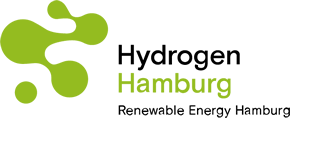Details
Heat transition with hydrogen – interview with Wärme Hamburg Utilisation of waste heat at the Hamburg Green Hydrogen Hub
Green hydrogen is not only an emissions-free energy source for applications in industry and logistics – producing it in an electrolyser using green electricity also generates a lot of waste heat – which can be used to efficiently heat buildings. The municipal heat supplier Wärme Hamburg is part of the consortium which is planning the construction of the Hamburg Green Hydrogen Hub. However, it is only one component of the plans to decarbonise the heat supply. Christoph Cosler, Head of Strategy and Corporate Development and project manager of the hydrogen project at Wärme Hamburg GmbH, reports on this in an interview with Renewable Energy Hamburg.

Green hydrogen is not only an emissions-free energy source for applications in industry and logistics – producing it in an electrolyser using green electricity also generates a lot of waste heat – which can be used to efficiently heat buildings. The municipal heat supplier Wärme Hamburg is part of the consortium which is planning the construction of the Hamburg Green Hydrogen Hub. However, it is only one component of the plans to decarbonise the heat supply. Christoph Cosler, Head of Strategy and Corporate Development and project manager of the hydrogen project at Wärme Hamburg GmbH, reports on this in an interview with Renewable Energy Hamburg.
Mr Cosler, where does Wärme Hamburg's interest in being part of the Hamburg Green Hydrogen Hub originate, and what does it expect to achieve by participating in the project?
We are particularly interested in the up to 13 MW of waste heat that the 100 MW electrolyser in Moorburg could produce starting in 2025 – depending on its application profile. It could allow us to supply up to 6000 residential units with heat. This number could also be increased further by scaling up the plant. Depending on the type of electrolyser, we obtain about 80° C of waste heat, which we intend to introduce into the heat cycle. This will make the whole project even more sustainable by utilising as much of the energy as possible. In fact, the use of waste heat from the electrolysis is only one aspect of our transformation path. Later on, we also intend to use the hydrogen directly for the heat supply. However, this will not be our main focus in the ramp-up phase of the hydrogen economy in Hamburg, as it provides better leverage for decarbonisation in the industry and logistics sectors.
Could you explain this transformation path in greater detail?
The implementation of the transformation path is a continuous process. Let me summarise the multitude of measures necessary for this in three medium- to long-term steps in which sector coupling will be further enhanced. We start with the step of shutting down the Wedel coal-fired power plant by 2025. A key aspect of the replacement concept is the “Port Energy Park”, within the framework of which we intend to build a combined-cycle gas turbine power plant (CCGT) that is connected to the new hydrogen grid. In future, up to 30-40% hydrogen can be added to the gas used in it. A full conversion of the plant is also possible at a later date. Another component of the overall concept is to make extensive use of industrial waste heat south of the Elbe. The second step will be to phase out coal at the Tiefstack combined heat and power plant by 2030. One further step will involve replacing the remaining fossil fuels in the heat supply.
I assume you are referring to the waste heat from the three large metallurgy companies for steel, copper and aluminium production?
Yes. Furthermore, wastewater heat recovery is another interesting component for us in the overall concept. We are familiar with the terrain and are already using waste heat from waste incineration plants. Waste heat from electrolysis, however, will take us into new territory. In addition, we will be at the forefront of testing the use of hydrogen in gas turbines. Among other things, we want to investigate how hydrogen can be used to meet peak loads on cold days when heat pumps reach their limits. Our goal is to amass know-how in this field and test the technology.
So hydrogen plays two roles for you: you will require it in the future to decarbonise the heat supply but also intend to use the waste heat from its current production. Back to the Hamburg Green Hydrogen Hub – are there any technical challenges and how certain are we that it will be implemented?
The Hamburg Green Hydrogen Hub will be the first of its kind in this configuration. Nevertheless, proven technology is being employed; only the scale is new, as the components are already technologically mature. Our goal is to get the hydrogen economy in Hamburg off to a successful start, which is why we are building on experience. The prognosis that the project will actually be built and put into operation currently depends, among other things, on pending funding decisions, but we are optimistic!



